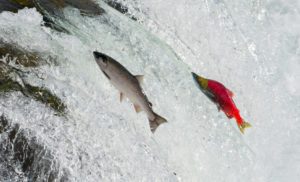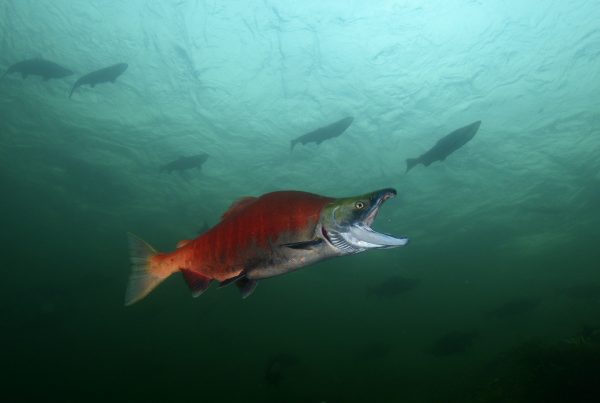There is a growing debate in the Pacific Northwest that is about to create a greater divide across the Cascades.
Last summer we all watched as a mother killer whale mourned her dead calf for almost two weeks with video shown daily on our local news. People throughout the area were touched and were made more aware of the struggles our local J and K killer whale pods endure and their dwindling King Salmon food supply. We “Coasties”, as we are known to our state neighbors to the east, started to think that we need to do something to stop this. We should not let our resident killer whale families die off because we have damaged their food source. The identified culprit for the decrease in the Columbia River King Salmon run has been targeted as the Snake River Dams.
The Snake River dams were built in 1945 when the only real objective at the time was to get cheap, renewable power, in the Pacific Northwest. At the time the salmon runs were much lower down on the priority list than building a reliable irrigation system and power supply. We still enjoy those benefits today, regionally. Washington, Oregon, and Idaho all benefit from the cheap cost of electricity and we have developed one of the leading wheat production areas in the world.
So here comes the collision: To help save the salmon the suggestion is being floated to remove the 4 Snake River dams. The problem that is being debated is that this extreme reaction will completely end the economic and regional benefits the dams provide to the Eastern portion of the Pacific Northwest. Without these dams we would not have the irrigation system necessary to sustain our agriculture. We would not have the river as a cheap, albeit “Green”, mode of transportation for the equivalent of 167,000 truck-loads of bulk wheat and other goods from the East side of the state to our ports of export. And it would dramatically alter the lifestyles of our neighbors and their agriculture heritage.
But, what about our commercial fishing communities that use a healthy fishery on the Columbia River system for their livelihoods. Are not their family heritages just as important? The commercial salmon season for the Columbia River last year was all but closed. There were just too few fish returning, be they salmon or steelhead.
The life cycle of salmon in the Pacific Northwest dates back to pre-history.
 The dams have been the focus of attention for decades as the cause of the reductions in the salmon runs. The life cycle of salmon in the Pacific Northwest dates back to pre-history. There have been fossils of salmon ancestors found in the Columbia River system that weighed 500 lb. Now we can’t assume that only the biggest examples were fossilized, there must have been much larger fish eons ago. When the Pacific Northwest was being explored and developed in the late 1800’s big salmon were caught weighing 100 lb. Today a King is considered big in the low 30 lb. range.
The dams have been the focus of attention for decades as the cause of the reductions in the salmon runs. The life cycle of salmon in the Pacific Northwest dates back to pre-history. There have been fossils of salmon ancestors found in the Columbia River system that weighed 500 lb. Now we can’t assume that only the biggest examples were fossilized, there must have been much larger fish eons ago. When the Pacific Northwest was being explored and developed in the late 1800’s big salmon were caught weighing 100 lb. Today a King is considered big in the low 30 lb. range.
Young salmon must get from their spawning ground, reds, to the ocean and then back to complete their life cycle. With dams in the river system, they must negotiate either traveling through the turbines or falling down a spillway to migrate to the sea. There is a huge toll on their population. When they have to pass 4 dams to reach the Columbia River, you can understand the stress on their survival. After spending 2-3 years at sea, they start the migration in reverse and have to pass through fish ladders or spillways to reach their spawning areas. Again the numbers reduce with each dam they have to pass. It is a tough life.
But it can be made easier and survival increased dramatically if investment is made to improve the dams for fish migration. We have two separate, but vital economies in the balance here. The agricultural East side and the fisheries of the West side. The dam system needs to be preserved, but it can undoubtedly be improved. Consider the amount of money that the Federal government is ruminating about spending to create a wall from the Pacific Ocean to the Gulf of Mexico. The dam system is a federal infrastructure that simply needs to be improved with 21st century design and technology for the benefit of all stakeholders. Who are those stakeholders? All of us.



